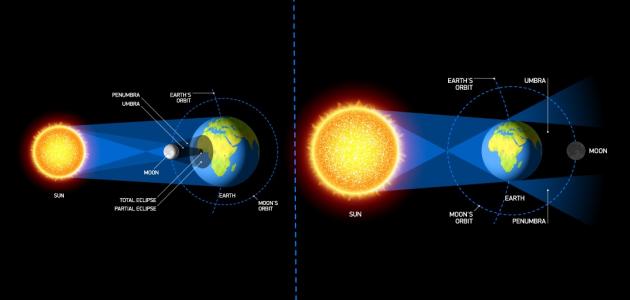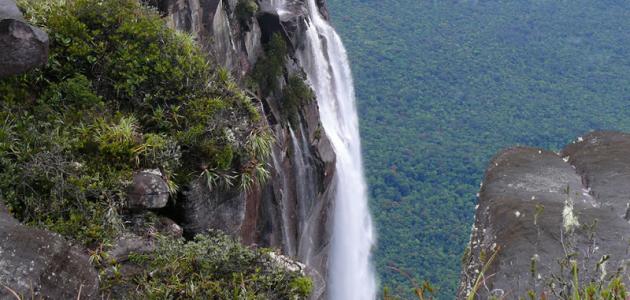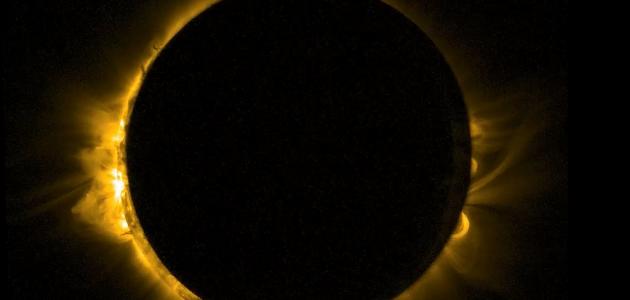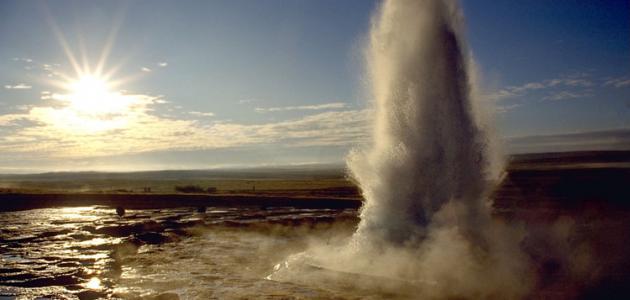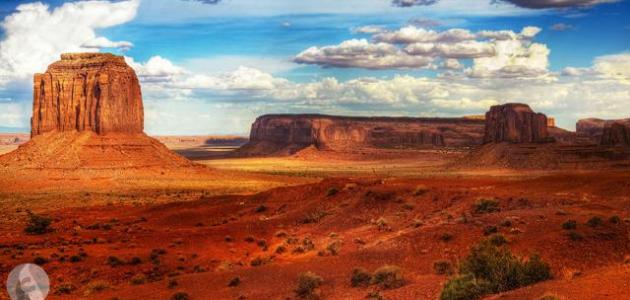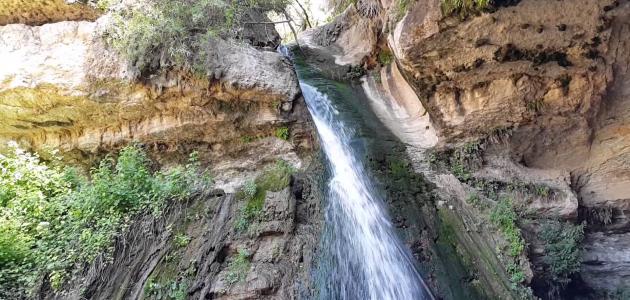The difference between an eclipse and an eclipse
A lunar eclipse can be defined as an astronomical phenomenon that occurs when the moon becomes in the Earth's shadow, as the Earth is between the moon and the sun. A solar eclipse can also be defined as an astronomical phenomenon that occurs when the moon's shadow falls on... The Earth, as the Moon is between the Earth and the Sun, and the following table shows some of the differences between these two phenomena:
| The difference | Lunar eclipse | solar eclipse |
|---|---|---|
| The phase of the moon in each of them | Full moon phase only | Maturity stage only |
| The time period for an eclipse and a total eclipse | It may last for approximately 6 hours | It may last for approximately 7.5 minutes |
| The areas covered by each | It covers all areas of the hemisphere where night prevails. Because the Moon is completely immersed in the Earth’s shadow, which is approximately 1.4 million km long, which is equivalent to about 3.7 times the average distance between the Earth and the Moon, and its width is 9,000 km, which is approximately 2.6 times the diameter of the Moon. | It covers only the area covered by the moon's shadow, as the length of the moon's shadow is 380,000 km. |
| The period of recurrence of an eclipse or a complete eclipse | Approximately once every 3 years | Once every 360 years |
| The ability to view both safely | It can be viewed safely with the naked eye without the need for special glasses. | The total eclipse can be viewed safely with the naked eye, but to view its beginning and end, or to view the partial eclipse safely, a person needs special glasses. |
Types of eclipses
There are three types of lunar eclipse:
Read also:What happens when a volcano erupts- Total eclipse: Total Lunar Eclipse occurs when the entire surface of the Moon enters the Earth's shadow.
- Partial eclipse: Partial Lunar Eclipse occurs when part of the Moon's surface enters the Earth's shadow.
- Penumbral eclipse: Penumbral Lunar Eclipse occurs when the Moon enters the penumbra, which is the dim part of the Earth's shadow.
Types of eclipses
There are three types of solar eclipses:
- Total eclipse: Total Solar Eclipse occurs when the Moon covers the entire disk of the Sun.
- Partial eclipse: Partial Solar Eclipse occurs when the Moon covers part of the Sun's disk.
- Annular eclipse: Annular Solar Eclipse occurs when the moon is near or at the apogee point, so it appears in a very small size compared to the sun, and therefore cannot cover it, and its shadow will not be able to reach the Earth, and therefore the sunlight remains visible, so it can The observer sees it in the form of a ring or rings.
Conditions for eclipses and eclipses to occur
The Moon's orbit around the Earth is inclined about 5 degrees from the plane of the Earth's orbit around the Sun, and therefore an eclipse or an eclipse will not occur every month during the full moon and new moon phases. For a solar eclipse or a lunar eclipse to occur, the following conditions must be present together:
Read also:Japan tsunami 2011- The moon appears in the full phase until a lunar eclipse occurs, and it appears in the new phase until a solar eclipse occurs.
- The presence of the Moon at or near one of the two points at which its orbit intersects the plane of the Earth’s orbit.
